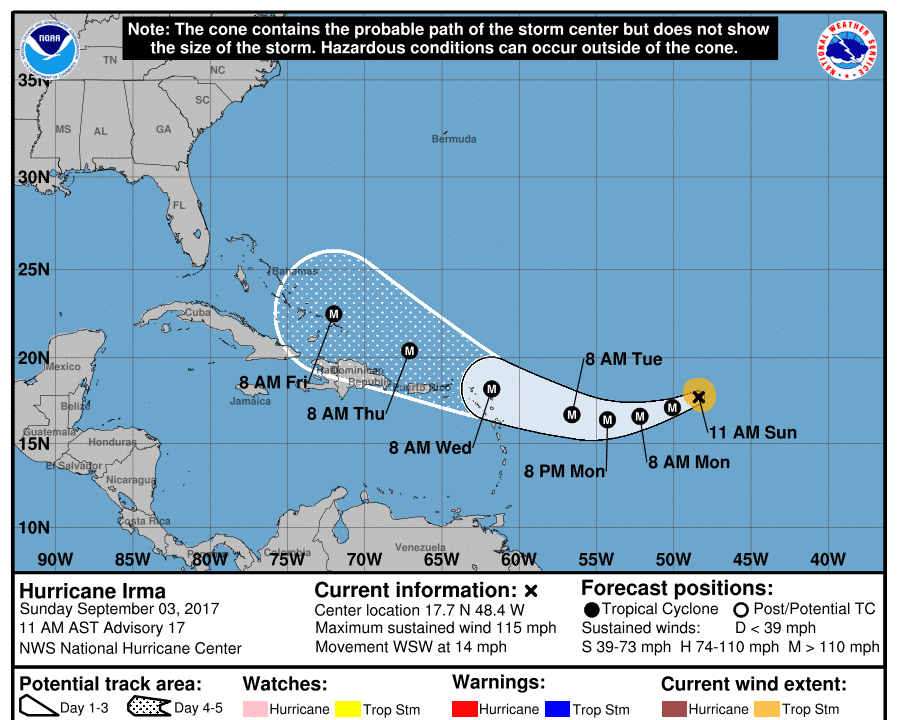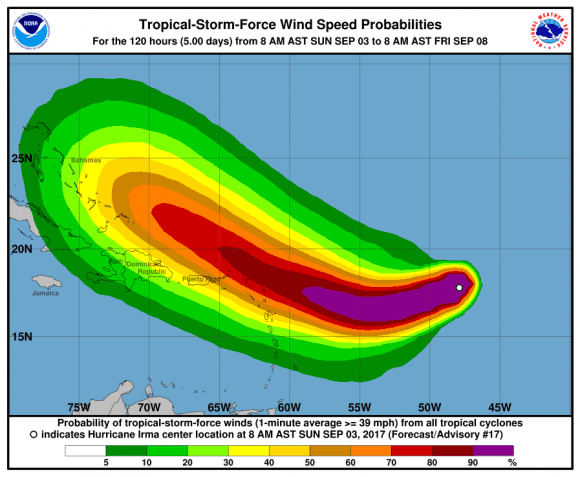As Hurricane Irma moves up toward the Leeward Islands, the National Hurricane Center says it has again strengthened to a category 3 hurricane.
Irma was first categorized as a category 3 on Thursday, Aug. 31, then downgraded to a category 2 before being increased to a category 3 again Sunday morning.
The Center shows Irma moving west-south-west toward the Caribbean at 14 mph in its 11 a.m. update, and predicts the storm could reach Puerto Rico and the Virgin Islands as early as Sept. 7.
It also warns that Turks and Caicos, the Bahamas, and Hispaniola could be affected by Irma.
Some of the dangers the hurricane brings are strong winds, storm surge, and rainfall, as well as rip currents and rough surf.
Irma is expected to strengthen as it moves westward in the week ahead, Weather.com reports.






